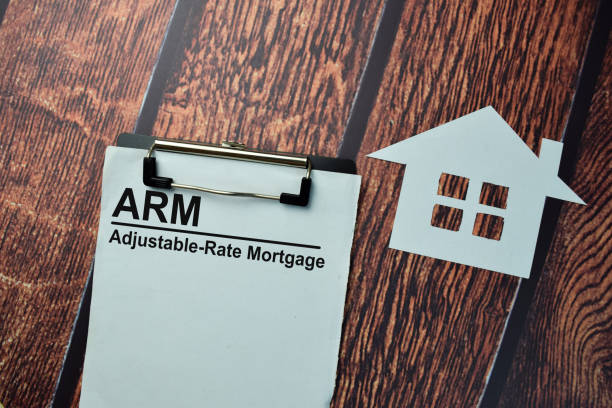If you’re thinking about buying a home, one of the first and most important steps in the process is getting pre-approved for a mortgage. Not only does this give you a clearer picture of how much you can afford to borrow, but it also helps you stand out to sellers in a competitive market. Pre-approval shows that you are a serious buyer and that a lender is willing to finance your purchase.
In this guide, we’ll walk you through everything you need to know about the mortgage pre-approval process, from what it entails to how you can improve your chances of getting approved.
What Does It Mean to Be Pre-Approved for a Mortgage?
Pre-approval is a process where a lender evaluates your financial situation to determine how much they are willing to lend you for a home purchase. This is different from pre-qualification, which is a less formal estimate of how much you might be able to borrow based on the information you provide. Pre-approval, on the other hand, involves a more in-depth review, including verifying your credit, income, and assets.
Once you are pre-approved, the lender will give you a pre-approval letter that outlines the loan amount, interest rate, and loan type you qualify for. This letter is often required when making an offer on a home and can make a significant difference in your home-buying process.
Step-by-Step Guide to Getting Pre-Approved
1. Check Your Credit Score
Before applying for pre-approval, it’s a good idea to check your credit score. Your credit score is one of the key factors lenders use to assess your ability to repay the loan. Most lenders prefer a score of 620 or higher, though some may offer loans with lower scores (particularly with government-backed loans like FHA or VA loans).
If your score is lower than you’d like, take steps to improve it before applying. Pay off credit card balances, correct any errors on your credit report, and avoid opening new lines of credit.
2. Gather Your Financial Documents
Lenders will ask for a variety of documents to assess your financial health. Be prepared to provide the following:
- Proof of Income: This includes your most recent pay stubs, W-2 forms (for salaried workers), tax returns (for self-employed individuals), or any other documentation that proves your income.
- Bank Statements: Lenders will ask for recent bank statements to verify your assets, such as savings and checking accounts. This is to ensure you have enough money for a down payment, closing costs, and reserves.
- Proof of Employment: A lender will usually want to verify your employment status, so be prepared to provide recent pay stubs or a letter from your employer.
- Debt Information: Lenders want to know about your existing debts, such as credit card balances, car loans, student loans, and other obligations. This helps them assess your debt-to-income ratio (DTI), which is another key factor in the approval process.
- Personal Identification: You’ll need a valid government-issued ID, such as a driver’s license or passport.
Having these documents ready ahead of time will make the pre-approval process go more smoothly.
3. Choose the Right Lender
Not all lenders are the same. It’s important to shop around and compare mortgage rates, terms, and fees from different institutions. You can choose from a variety of lenders, including:
- Banks and Credit Unions: Traditional financial institutions that offer mortgages.
- Online Lenders: These can often offer a more streamlined process and competitive rates.
- Mortgage Brokers: They act as intermediaries between you and various lenders, helping you find the best deal.
When comparing lenders, consider factors such as interest rates, fees, loan types, and customer service. It’s also helpful to read online reviews and ask for recommendations from friends or family who have recently purchased homes.
4. Submit Your Pre-Approval Application
Once you’ve chosen a lender, you’ll need to submit a formal pre-approval application. This typically involves completing an online or paper form with your personal and financial information.
Be honest when filling out the application, as lenders will verify the information you provide. Incorrect or misleading information can delay the process or even cause the lender to deny your application.
5. Wait for the Lender’s Review
After you submit your application, the lender will review your financial information. This step can take anywhere from a few hours to a few days, depending on the lender and the complexity of your financial situation.
The lender will assess:
- Your Credit Score: As mentioned earlier, this plays a key role in your loan eligibility.
- Your Income and Employment History: Lenders want to ensure you have a stable income to repay the loan.
- Your Debt-to-Income Ratio (DTI): This is the percentage of your monthly income that goes toward paying off debt. A lower DTI typically indicates that you can handle a mortgage payment comfortably.
- Your Assets: Lenders want to see that you have enough savings for a down payment and closing costs, plus some reserves for emergencies.
If everything checks out, the lender will issue a pre-approval letter, which will outline the loan amount, interest rate, and other key terms.
6. Receive Your Pre-Approval Letter
Once pre-approved, you’ll receive a pre-approval letter from the lender. This document is a critical piece of your home-buying journey because it shows sellers that you are financially capable of buying a home. The letter will typically include:
- The maximum loan amount you’re pre-approved for
- The interest rate (or an estimate based on current market conditions)
- The type of loan you qualify for (e.g., FHA, conventional, VA)
- Any conditions that need to be met before final approval
Keep in mind that a pre-approval letter isn’t a guarantee. Your final loan approval is contingent on factors like the home’s appraisal value and the title search.
7. Start House Hunting
With your pre-approval letter in hand, you’re now in a position to begin house hunting. Sellers will take your offer more seriously when they see that you’re pre-approved, which can give you a competitive edge, especially in a hot real estate market.
8. Make an Offer
Once you find a home you like, you can make an offer. If your offer is accepted, the lender will then begin the process of underwriting, which includes verifying all the details of the property and the loan. The home will be appraised, and you may be required to provide additional documentation.
Tips for Improving Your Pre-Approval Chances
- Maintain a Low Debt-to-Income Ratio: Keep your monthly debt payments as low as possible.
- Save for a Larger Down Payment: A larger down payment can help you qualify for a better interest rate and lower monthly payments.
- Avoid Big Purchases or Opening New Credit: Any significant financial changes can affect your pre-approval status.
- Stay in Your Job: Lenders prefer a stable employment history. If possible, avoid changing jobs or careers during the pre-approval process.
Final Thoughts
Getting pre-approved for a mortgage is one of the most important steps in the home-buying process. By understanding what’s involved and taking the time to prepare, you can increase your chances of getting approved and make your home-buying experience smoother. With a pre-approval letter in hand, you’ll be better equipped to find your dream home—and ultimately close on it—without the stress of financial uncertainty.

